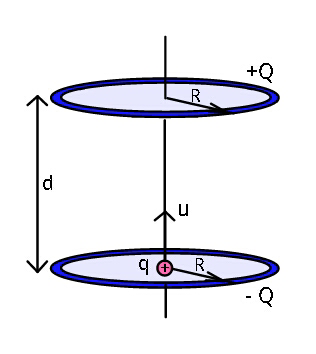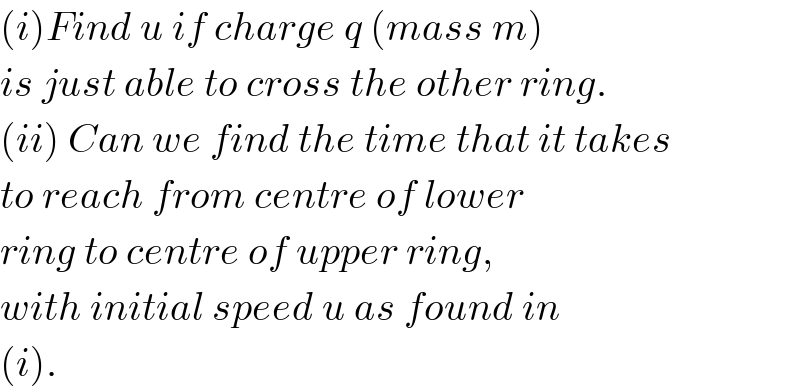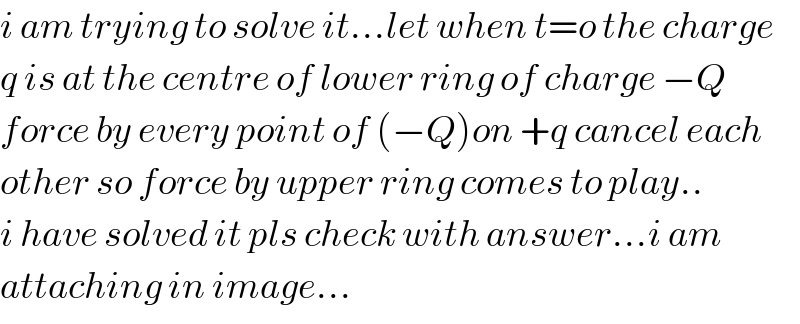
Question and Answers Forum
Question Number 34196 by ajfour last updated on 02/May/18

Commented by ajfour last updated on 02/May/18

Commented by tanmay.chaudhury50@gmail.com last updated on 02/May/18

Answered by tanmay.chaudhury50@gmail.com last updated on 02/May/18
![let when t=0 thecharge +q at the centre of lower ring,the attractive force by every point of lower ring on +q balance each other for upper ring the electric field at the centre of lower ring isE=(1/(4Πε_0 ))(Q/((R^2 +d^2 ))) its vertical components E_v =Ecosθ E_v =(1/(4Πε_0 ))(Q/((R^2 +d^2 ))).(d/((√((R^2 +d^2 ))) )) [cosθ=(d/(√((R^2 +d^2 ))))] net retardation (g+E_v ) let the final velocity of charge q=0 as it just able to cross the centre of upper ring so 0^2 =u^2 −2ad u=(√(2ad)) where a=(g+E_v )↓ 0=u−at t=u/a t=(u/(g+E_v )) u=(√(2{g+(1/(4Πε_0 ))((Qd)/((R^2 +d^2 )^(3/2) ))}.d)) pls check with answer](Q34201.png)
Commented by ajfour last updated on 02/May/18

